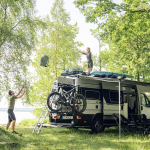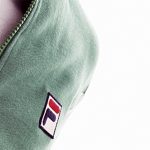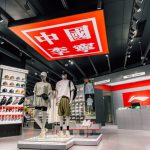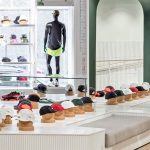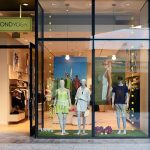Stable. Strong. Healthy. From the largest conglomerate to the smallest family-owned specialty manufacturers, those are the words paddlesports executives have used to describe the market. The Outdoor Retailer Summer Market will open with paddlesports manufacturers feeling good about their brands, products, and prospects for future growth.
Mark Leopold, group VP-watercraft for Johnson Outdoors explains, “We look at the market overall as stable. Were growing nicely.” On the other end of the vendor spectrum, Bell Canoes VP of sales & marketing, John Fleck, reports similar optimism. “We feel the paddlesports market is stable if not growing slightly. Our canoe numbers have been increasing steadily.”
New outdoor recreation research released by OIA adds validity to the perceptions of marketing and sales executives. The 2005 Outdoor Participation Study reports canoeing has consistently placed as the most popular form of paddlesports activity over the last seven years. The report also states that the size of the kayak participant and enthusiast populations has doubled from 1998 to 2004. Every executive contacted for this preview expected growth to continue but not as easily as over the past decade.
“The real key to the market in our opinion is innovation,” said Kelly Stone of Werner Paddles. “The key to keeping it going and driving it faster than stable is to keep your eye on innovation.”
While every vendor will have their own story to tell about participation, innovation, and growth, the recent Watermark/Confluence consolidation will surely dominate much of the conversation at the show.
“I think it has some dealers scared and some manufacturers scared,” said David Hadden, VP sales & marketing for Heritage Kayaks. “It has us all on edge. How will everyone accept this new giant company? Dealers dont know what to expect. They are concerned about putting all their eggs in one basket and having so much open to buy with one company.”
For Confluence, the timing of the show couldnt be better. “It gives us an opportunity to not only see our dealers, but to make a statement visually to reinforce what we are saying,” said Kelly Woolsey, VP sales at Confluence. “We can all talk, but they want to see you walk the talk.”
Woolsey and the Confluence management team have been working to combine the two companies and address concerns from many different audiences. “Im getting input from our sales reps, dealers, distributors, and employees. There is anticipation and some apprehension as well. We have to focus on the positioning and the differentiation between the brands. We are making sure we have the positions correct and the models within the lines that reflect the brand positioning,” explained Woolsey.
Defining the strength of the paddlesports market requires an analysis of much smaller product niche segments. While some manufacturers report flat or declining sales in the whitewater segment another will report growth in recreational touring. Meeting the needs of paddling enthusiasts means reacting to shifting interests.
Recent interest in kayak fishing is generating sales at many manufacturers. “Fishing is definitely an emerging segment that is only going to get stronger and more important. Weve developed a variety of product specifically target for that and we see that as a real growth opportunity in the near term and the long term,” said Leopold.
Hertages Hadden sees tremendous potential. “One in six people in the United States fish, about 44 million participants making it the fourth most popular sport. Anglers spend $116 billion a year in the pursuit of catching fish. If we can convert 5% of that population to kayak fishing our industry could double in size.”
Kayak fishing represents an exciting opportunity since many of the buyers are coming from outside the traditional outdoor recreation audience profile. Woolsey describes the segment. “Kayak fishing started on the coasts with sit on tops and now its moved inland. We are selling as many sit-ins to anglers as we are as sit on tops. We are seeing most of the growth from fisherman who see the benefit of the kayaks-no noise, easier to handle in tighter spots, easier to carry and move around, doesnt cost as much as a boat.”
Werner Paddles is making a conscious effort to promote their paddles to fisherman. “Whats exciting to us is that those people are primarily fisherman and secondarily paddlers, said Stone. “I think they are getting more and more sophisticated in terms of the equipment they are choosing and buying for fishing. We see them upgrading or buying better product from the onset.”
An avid fisherman himself, Haddon sees fishermen looking at a new way to participate in their sport. “Many of these fishermen weve seen may have never paddled a kayak before. Ive sold fishing kayaks to guys who own $50,000 center console fishing boats.”
The 2005 Outdoor Participation Study shows that 45% of touring or sea kayaking participants are women. Those numbers havent gone unnoticed. “The female paddler has always been there, but we are a lot more focused on products that are developed by women for women and really trying to go after that. We are a segment that is really growing as well. We have some retailers reporting that they are selling 40-50% of their boat sales to women,” Leopold said.
Stone agrees, “Theres definitely growth in women. And that has been fantastic. Smaller shafts and smaller blades have been excellent for us on both the touring side and whitewater sides.”
While kayaking, especially extreme whitewater, gets the media attention, canoeing is also seeing increasing interest as families look to include everyone on the water. “The utilitarian nature of the canoe has made people take a second look at it after they have ventured through a touring or recreation kayak. Thats encouraging for us,” said Fleck from Bell Canoes.
Fierce competition for other manufacturers is enough to keep everyone on their toes, but reacting and responding to changing conditions outside outdoor recreation is equally important. This years spike in oil prices has been felt across the board.
“The price of oil is brutal. It affects everything we do across the board,” said Wisse. “We are re-costing all of our products to see where our margins are at. With half of our business being in the synthetic paddle market, thats all massively effected by the petroleum market. We are going to have to pass on slight price increases, but we cant price ourselves out of the market either.”
Werner Paddles, like many companies, is concerned about the price and availability of raw materials. “We use a lot of carbon. There is a worldwide shortage of carbon. Its being used in more and more for recreation products like bicycles and golf clubs. As much as we prepared, we ran into shortages as well as huge increases in prices. Were working as hard as we can to create safety inventories, make sure we are anticipating increases as much as we can,” explained Stone.
Bell Canoe faces similar issues. “The war has effected composites production. Luckily, we locked in our purchase orders for the entire year, but in 2006 Im not sure whats going to happen with the supply of Kevlar. There are several manufacturers who are having trouble getting supplies because the materials are being diverted to aerospace and military uses,” Fleck said.
Pricing concerns David Hadden from Heritage, but from a different perspective. “People are willing to pay to get more. Oil prices have hurt everyone, but every time I see a kayak priced at $299 whether its a closeout, its just crazy. Its amazing. What you used to get on a boat that cost $700 now comes on a boat priced at $350 today. Weve cheapened our marketplace a little more than we had to. We have to remember that we dont have to give our products away,” he said.









